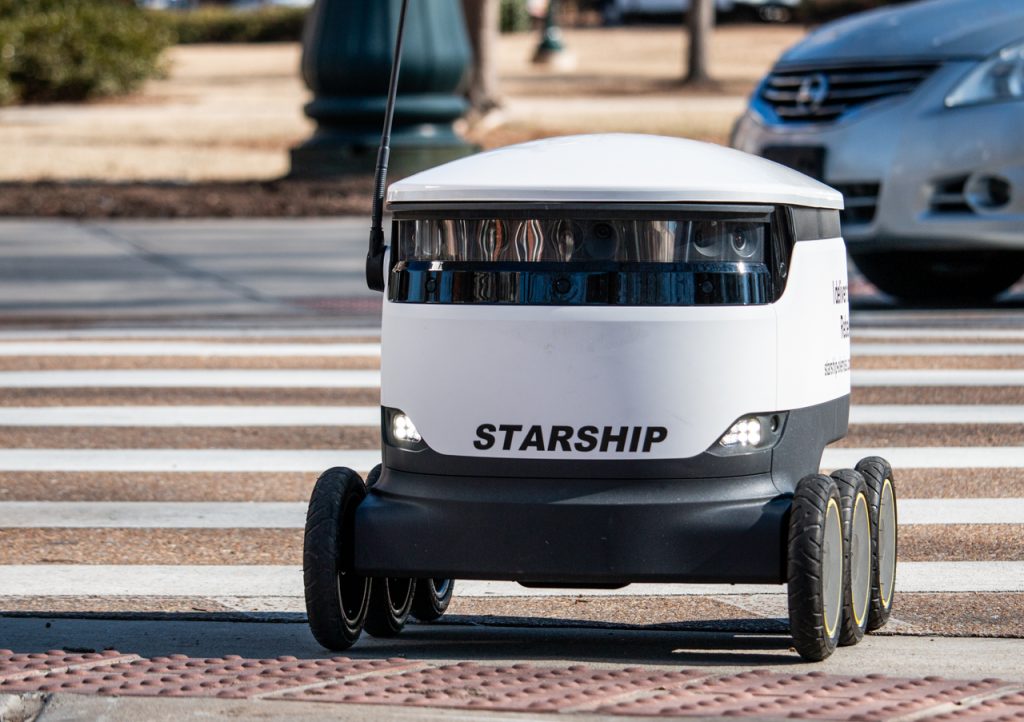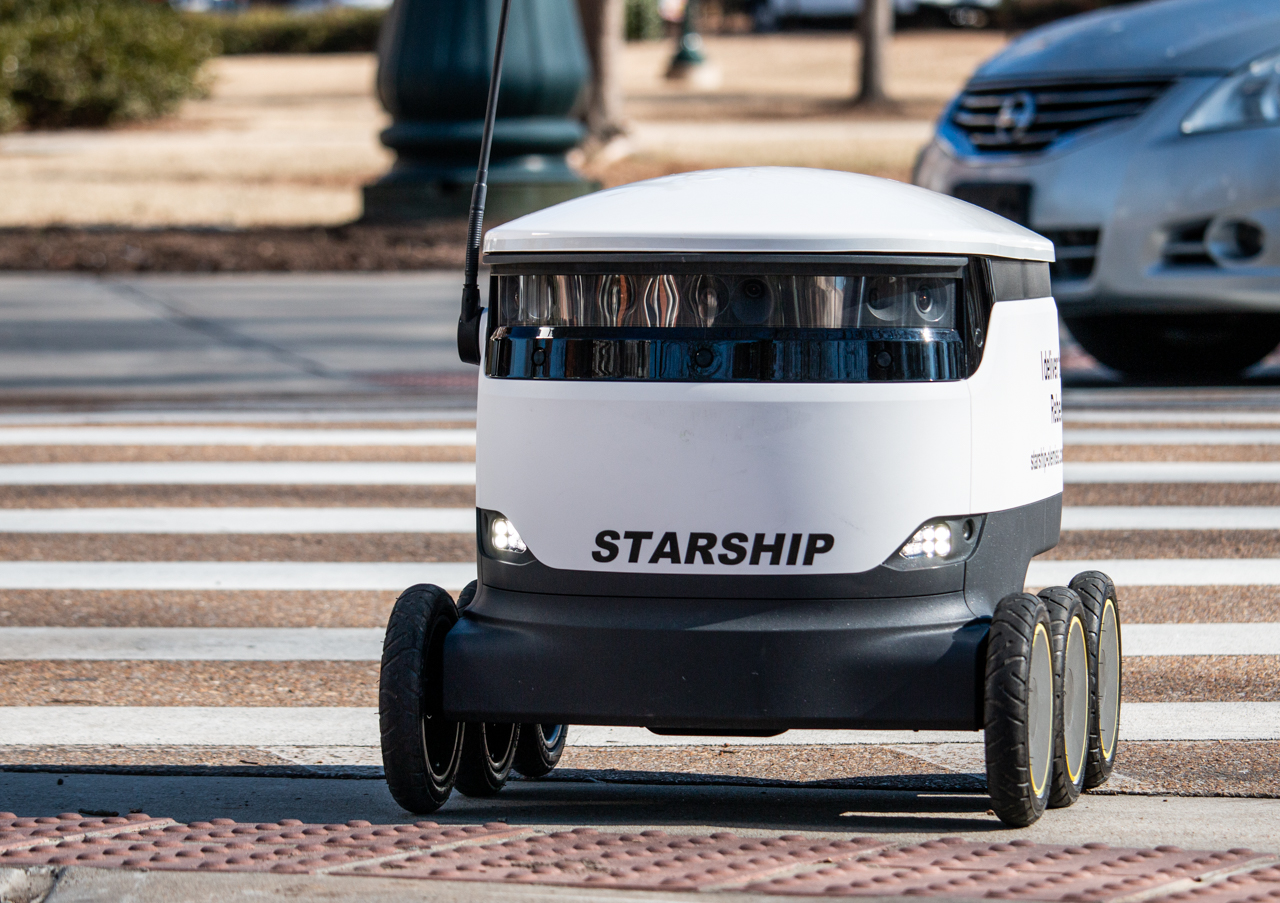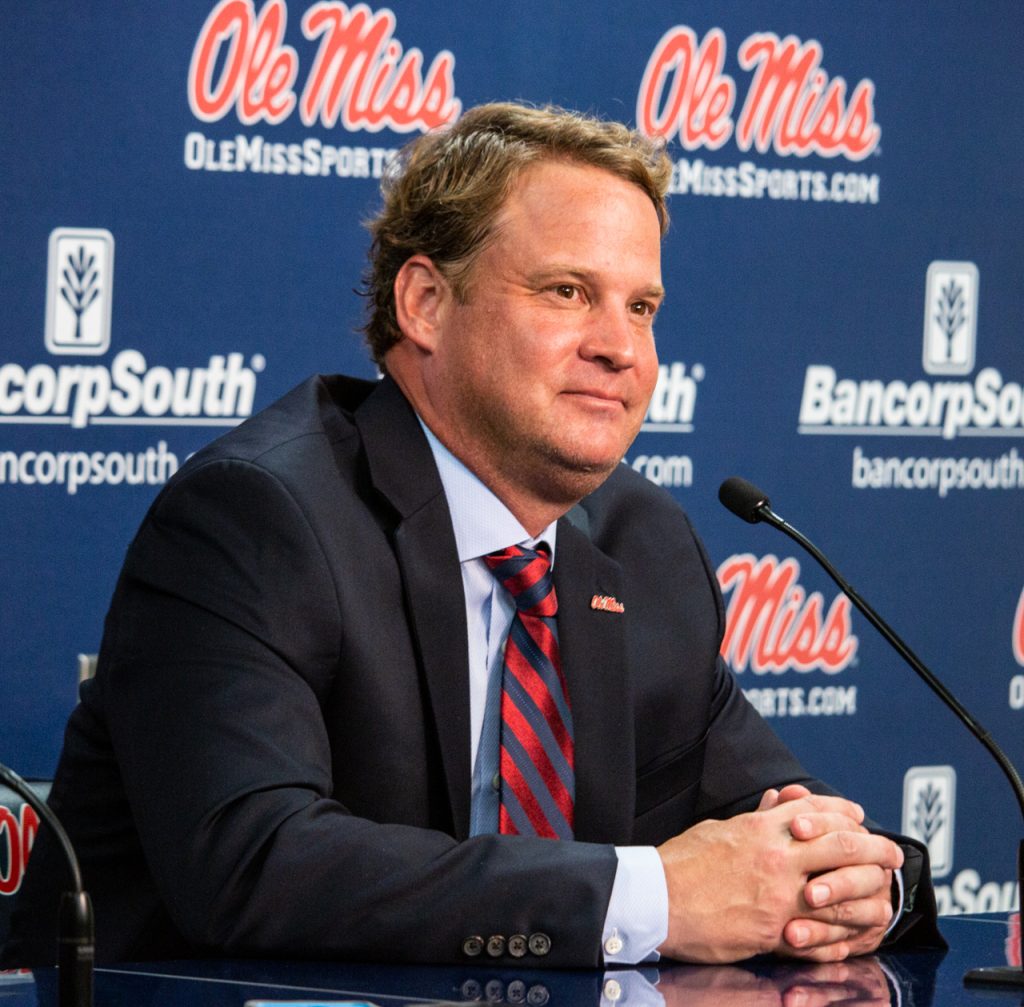
For students, the new Starship robot service offers food delivery on campus. However, the service has caused headaches for many of the employees at campus restaurants where it is offered.
“Yes, it has caused a disruption,” said Katavia Sisk, an employee at Starbucks in the JD Williams Library. “Like in a drive-thru line, you have to prioritize orders from them, and it disrupts the flow because we have to have someone hop in and out to take the order.”
Ole Miss currently has 30 delivery robots on campus. When the on-campus restaurants receive an order from the Starship app, they make the order and put it inside one of the robots. The app then gives customers an estimated time of arrival for the food, and customers use the app to open up the robot and retrieve their orders.
When the delivery service first opened on Jan. 28, the service was swamped with orders. This resulted in wait times of 15 to 40 minutes for several of the on-campus restaurants. Because of the high demand, some restaurants did not take orders or would only accept orders from nearby customers.
In addition to the orders employees receive inside their restaurants, they now have to help prepare the orders from the Starship delivery service. In the student union, the supervisors have been the ones that send out orders.
“My supervisors mostly do it,” said Kathy Corothers, an employee at McAlister’s Deli. “My boss, Brad — he does it — and then my supervisor. But a person like me, I just clean. I don’t do it.”
While the delivery system has given employees more work to do, some see the new robots as a positive challenge.
“Yes, (there are) definitely a lot more orders, but it kind of forces us to keep things fresh, so it’s a good thing,” said Akarus McNeal, an employee at Qdoba in the Student Union.
While food service employees have had to learn a new system for the service, many of them have not found difficulties working with the new technology.
“The system is pretty much self-explanatory and makes it really easy to put (the food) in and get it out as quick as possible,” McNeal said.
However, some employees see the speed of the delivery robots as problematic. Because of the time it takes for the delivery robots to travel on campus, Sisk does not see how the service is practical for delivering coffee.
“It’s a good idea, but given the time it takes, it undermines the point of hot coffee because it takes 20 minutes for it to get across campus,” she said. “At that point, it’ll be lukewarm.”
Though the service creates more stress for the employees at restaurants on campus, others see the use of delivery robots as a good idea.
“For students, with the weather change from the cold weather to the rainy weather, they don’t have to be all entrapped inside the Union. We have a delivery service at each station,” said McNeal.
Since working with the delivery robots on campus, Sisk said she has had to deal with the issue of people vandalizing or abusing them.
“Someone pushed one down the hill. That’s not okay,” she said. “They’re there to make your life easier, so you shouldn’t want to vandalize them. There could be someone’s food in there.”
Cody Walls, an employee at McAlister’s Deli, said that despite the initial problems, the system will be easier to handle once they get used to it.
“I can tell you for sure it’s increased our workflow a lot — which is stressing people out — but I’m sure once we get used to it, it’ll be just another day,” Walls said.
















